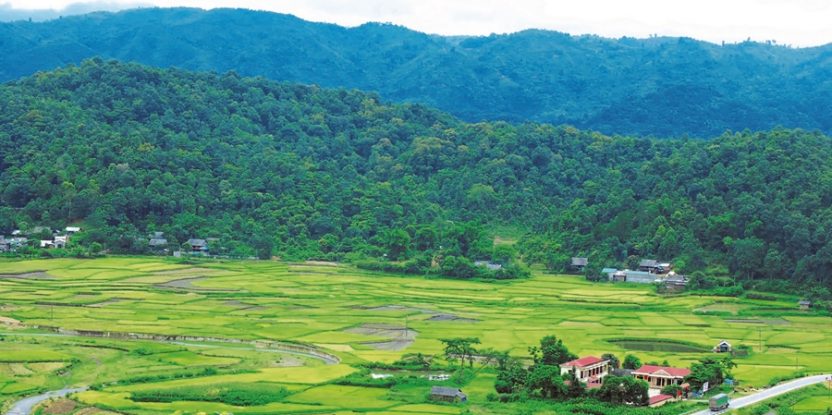My colleague — Mi Sun Park — and I were fortunate to be able to co-edit a special issue of the scientific journal, Forests, focusing on a systematic approach to agroforestry policies and practices in Asia.
Agroforestry is a traditional land-use practice that optimizes the benefits of biological interaction by intentionally linking trees, crops and livestock in agroecological systems. Agroforestry covers around 1 billion hectares, or 43%, of agricultural land globally and engages more than 900 million people. In Asia, agroforestry has played a critical role in local livelihoods since ancient times. If defined as being more than 10% tree cover on agricultural land, agroforestry covers 77.80% of all such land in Southeast Asia, 50.50% in East Asia, 27% in South Asia and 23.60% in Northern and Central Asia.
The peoples of Asia have long histories of deploying diverse agroforestry systems for fuel, food, medicine and income. However, beginning in the early 20th century, growing populations and external influences led to agroforestry in Asia often being converted to intensive agriculture and monocultural tree plantations, causing environmental and social challenges, such as food insecurity and loss of habitat for both people and other species.
However, thanks in large part to the research work of World Agroforestry (ICRAF), there has been an increase in awareness of the benefits agroforestry provides and it has become an important topic in global and national agendas for sustainable development. Agroforestry is now recognized as a climate-smart agricultural system by the Intergovernmental Panel on Climate Change and the United Nations Framework Convention on Climate Change; as a Nationally Appropriate Mitigation Action and National Adaptation Programme of Action for the agriculture sector; as an important strategy under the United Nations Convention to Combat Desertification; as beneficial to biodiversity by the United Nations Convention on Biological Diversity; and able to enhance ecosystem services, by the United Nations Forest Forum.
In Asia itself, agroforestry has gained attention in both fields of forestry and agriculture, which it is considered to bridge. In some Asian countries, agroforestry is now included in agriculture or forestry policies. In more recent years, specialized national agroforestry policies have appeared. In 2014, for example, India became the first country in the world to adopt a national agroforestry policy followed by Nepal in 2019.
At regional level, at the 37th ASEAN Ministers of Agriculture and Forestry Meeting in 2015, ministers endorsed the Vision and Strategic Plan for ASEAN Cooperation in Food, Agriculture and Forestry 2016–2025. This strategic plan identified seven ‘strategic thrusts’ and related action programs. Strategic Thrust 4 focuses on increasing resilience to climate change, natural disasters, and other shocks, and includes action programmes for expanding resilient agroforestry systems where ecologically and economically appropriate.
Recognizing the contributions of agroforestry to achieving food security, sustainable forest management and the Sustainable Development Goals, the 20th ASEAN Senior Officials of Forestry meeting agreed to develop the ASEAN Guidelines for Agroforestry Development, which were adopted at the 39th ASEAN Ministers of Agriculture and Forestry Meeting in 2017. They include 75 guidelines under 14 principles for the institutional, economic, environmental, socio-cultural, technical design and communication, and scaling-up areas of agroforestry.
In light of all the above-mentioned activity and more on the ground, the special issue explores the environmental, economic and social dimensions of agroforestry in Asia through multiple research methods. The issue features 11 articles on agroforestry at national, regional and global levels that lay out research trends; agroforestry’s main services and functions; showcase multiple studies from Asian countries, including Bangladesh, Indonesia, Lao PDR, Nepal, Timor-Leste and Viet Nam; and spell out the benefits of agroforestry, such as income generation and carbon sequestration; farmers’ willingness to adopt agroforestry systems; ecosystem services; social and cultural norms; agroforestry management policies; and bamboo and wild-simulated ginseng; as well as different research methodologies (systematic reviews, surveys, topic modeling, policy analysis and case studies).
As editors, we set out to ensure that the scientific evidence and practical lessons on agroforestry policies and practices in Asia were comprehensively presented so as to expand the knowledge base for establishing and implementing agroforestry policies and practices in Asia.
We want you to share Forests News content, which is licensed under Creative Commons Attribution-NonCommercial-ShareAlike 4.0 International (CC BY-NC-SA 4.0). This means you are free to redistribute our material for non-commercial purposes. All we ask is that you give Forests News appropriate credit and link to the original Forests News content, indicate if changes were made, and distribute your contributions under the same Creative Commons license. You must notify Forests News if you repost, reprint or reuse our materials by contacting forestsnews@cifor-icraf.org.
